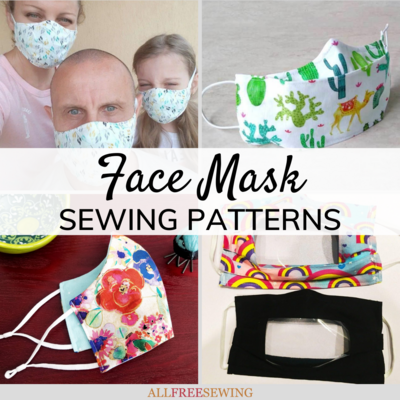What are the Best Fabrics for Face Masks?
Making face masks for yourself or others? The type of fabric you use is incredibly important to its effectiveness.

As shelter-in-place orders continue and face masks become mandatory to go into many public spaces, it has become even more important that your face mask is effective.
While medical masks, such as a n95, are the most effective those masks should be reserved for Health Care Professionals.
If you're one of the many people who has elected to make your own homemade mask you may be wondering what the best fabric for face masks is.
Well, according to research done at the University of Chicago has determined that a combination of tightly-woven cotton and chiffon is the most effective. However, there are others that were nearly as effective too!
Keep in mind that the guidelines change often and you should know the governmental guidelines before purchasing or sewing your next mask. The latest information about COVID-19 and masks can be found on the CDC website here.
Sign Up For More Free Patterns >>>
What to Look for in a Cloth Face Mask
Researchers tested how different fabrics blocked different sized particles to test which fabrics and fabric combinations were the most effective barriers. While masks are effective at keeping people from touching their faces, their true help is to keep someone who is sick from infecting others by blocking any particles from reaching someone else. Thus, a strong barrier is necessary.
Based on the findings the researchers concluded that a layer of tightly-woven cotton is the best material for homemade face mask as it acts as a physical barrier. However, double layering is so important and can increase the effectiveness immensely. The best combination was cotton with a double layer of chiffon as that can filter out 80-99% of particles!
The image below shows several pieces of patterned cotton fabric on the left and a close-up of blue chiffon on the right.

However, other fabrics were nearly as effective so you do not need to go out and buy chiffon if you have flannel or natural silk around your house. Even just using cotton quilt with batting, is incredibly effective against spreading the virus.
The image below shows close-up of flannel fabric on the left and a close-up of green silk on the right.

Another study found that, if you do not have access to materials like chiffon or silk, two layers of cotton (such as t-shirt fabric) can be incredibly effective and breathable, providing a great barrier for when you leave the home.
Beyond Fabrics
Fabric is important when making your own masks, but even if you find the best fabric to keep yourself safe the efficiency can go down by 50% if the fit is wrong. Though wearing masks can be an adjustment at first, making sure it fits tightly against your face is essential. Even a 1% gap is too much. When sewing a face mask make sure you measure often and are aware of how it fits against your face so you can make the most effective mask possible!
Want More?
Read Next5 Minute Tissue Holder
















